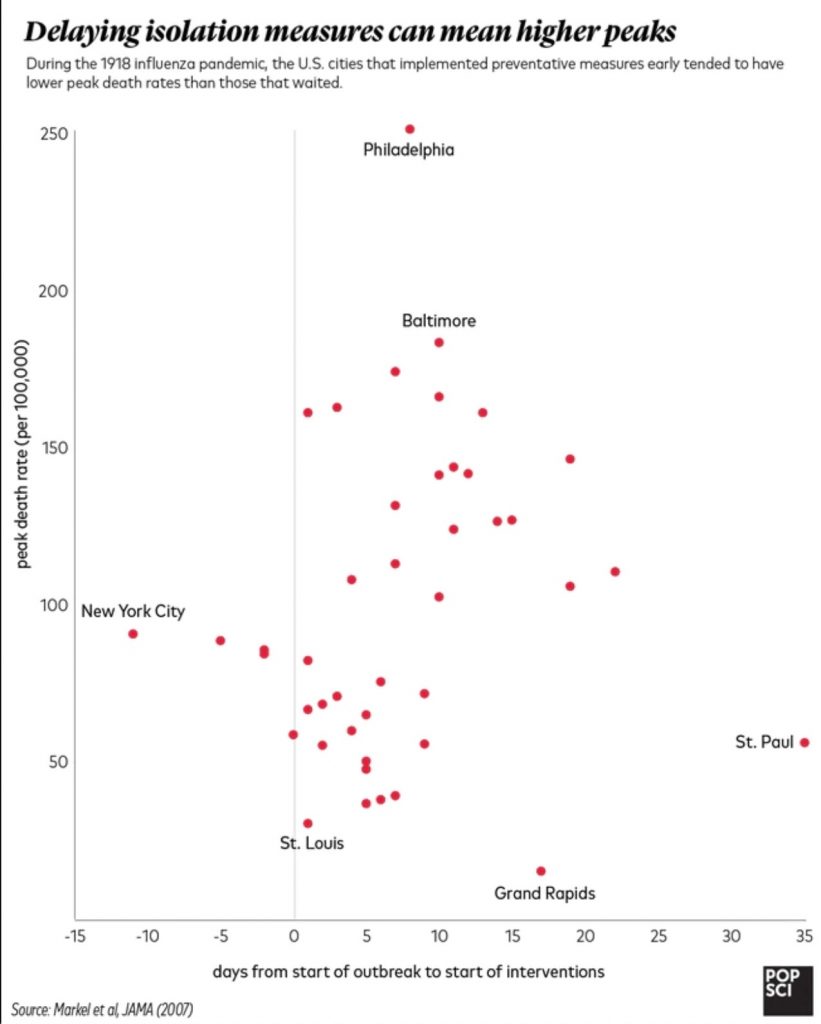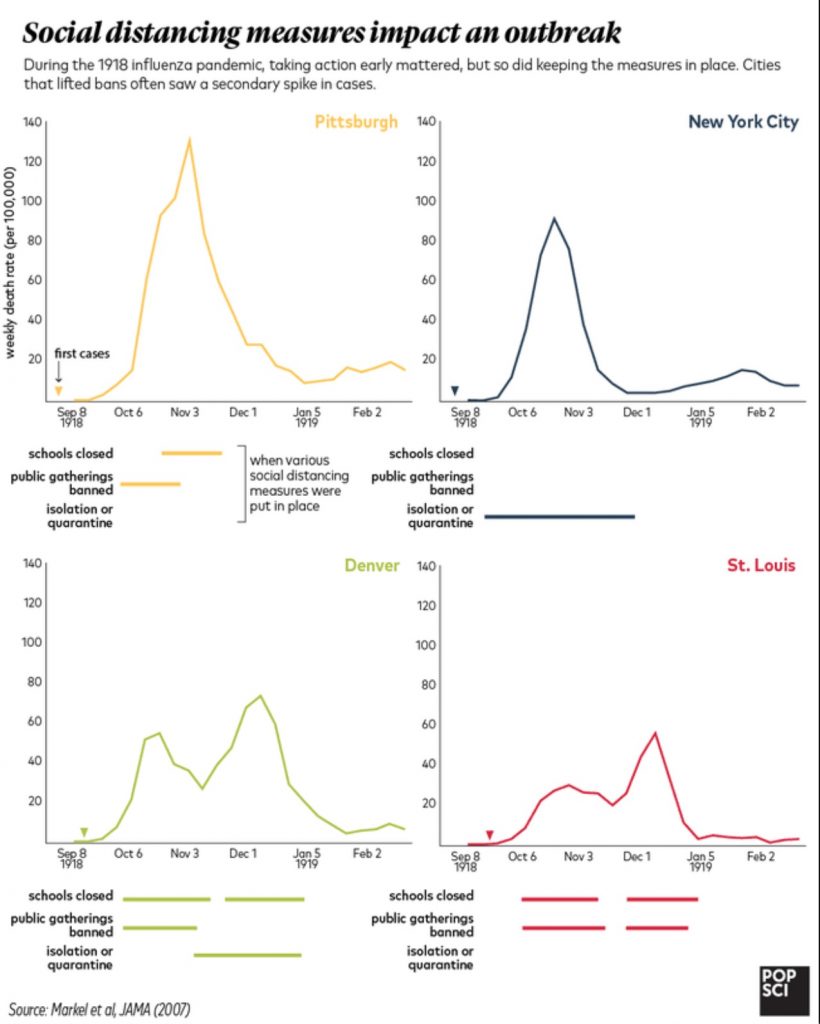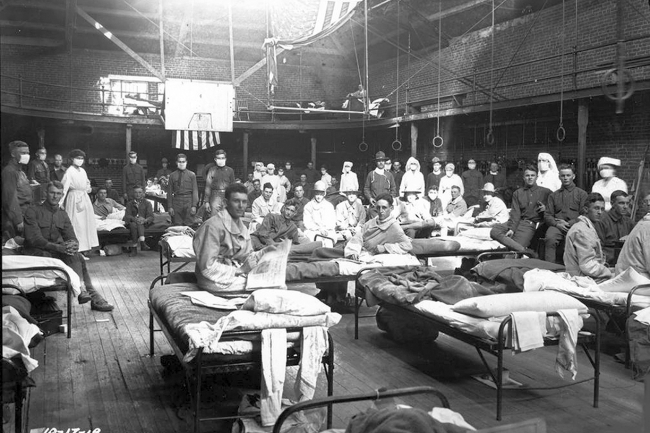The influenza pandemic of 1918 (also known as the Spanish flu, even though it didn’t originate in Spain) is among the most severe pandemics in recent history, only second to the Black Plague of the 1300s.
While it may have been a bit more than a century now since this pandemic struck, there are noticeable parallels in the current COVID-19 pandemic. Let’s have a trip back in history and learn more about this pandemic and how it can help us in combating the current pandemic.
A quick background
The 1918 flu pandemic is caused by influenza AH1N1 virus — also associated with the 2009 H1N1 pandemic. It infected one-third of the world’s population at the time and killed approximately 50 million worldwide.
Let’s look at the case of the United States. It was the spring of 1918 when the first case of the flu was identified from a military personnel. There were three waves pandemic all in all:
- Spring of 1918
- Fall of 1918
- Winter and Spring of 1919
It is important to note that the pandemic struck in the midst of World War I, given this, the government is quite low on resources to fend of the disease.
From our partners:
By the end of the pandemic, about 675,000 of the deaths originated from the United States.
Modern parallels
Given that it was a time of war, maintaining high morale was important. This led government officials to hide the truth about the severity of the disease and this also resulted in newspapers and health authorities following suit.
Of course, it didn’t take long for the people to catch on, with people in their community dying rapidly after being infected. This sown distrust among communities and made it more difficult to execute preventative measures.
The Trump administration in the past few weeks had been firm in downplaying the severity of the pandemic, something which he is denying now that the United States has around 35,000 confirmed cases as of March 23 which now jumped to 870,000 cases as of April 24.
However, if we look at countries like Singapore, Hong Kong, and Taiwan where measured in response to the outbreak have been undertaken almost immediately as the news of a novel coronavirus strain reached them. The number of cases among these three countries remains controlled.
This highlights the importance of transparency and quick intervention in the face of pandemics.
Learning from the past
While the world has completely changed now, there are some more lessons that we can learn from the 1918 flu pandemic that is still applicable today.
At the time, people can only rely on isolation measures to prevent the further spread of the pandemic. Sarah Chodosh’s illustration based on a study of 43 cities shows that the early implementation of isolation measures made a huge impact in flattening the epidemic curve:

Another important lesson to learn is keeping measures in place.
In the same study, it was revealed that cities like Denver and St. Louis experienced a second spike in cases when their social distancing measures had been lifted early. In contrast, cities like New York and Pittsburgh did not experience these secondary spikes.

Our world is definitely better-equipped technology-wise in combating epidemics. The people of 1918 cannot genetically sequence viruses to potentially create vaccines nor did they have testing kits. Information dissemination and data collection are better than it has ever been. It is up to us to leverage these wisely and to apply the lessons that past pandemics had given us.
References
Barry, J. (2020, March 17). The Single Most Important Lesson From the 1918 Influenza. Retrieved March 20, 2020 from https://www.nytimes.com/2020/03/17/opinion/coronavirus-1918-spanish-flu.html
Chodosh, S. (2020, March 18). What the 1918 flu pandemic can teach us about COVID-19, in four charts. Retrieved March 20, 2020 from https://www.popsci.com/story/health/coronavirus-1918-flu-pandemic/
Centers for Disease Control and Prevention (n.d.). 1918 Pandemic (H1N1 virus). Retrieved March 20, 2020 from https://www.cdc.gov/flu/pandemic-resources/1918-pandemic-h1n1.html
Schulze, E. (2020, March 18). What the 1918 influenza pandemic can teach governments about coronavirus. Retrieved March 20, 2020 from https://www.cnbc.com/2020/03/18/coronavirus-response-lessons-from-the-1918-influenza-pandemic.html
Gunderman, R. (2020, March 20). 10 Misconceptions About the 1918 Flu, the ‘Greatest Pandemic in History’. Retrieved March 20, 2020 from https://www.discovermagazine.com/health/10-misconceptions-about-the-1918-flu-the-greatest-pandemic-in-history
Illing, S. (2020, March 20). The most important lesson of the 1918 influenza pandemic: Tell the damn truth. Retrieved March 20, 2020 from https://www.vox.com/coronavirus-covid19/2020/3/20/21184887/coronavirus-covid-19-spanish-flu-pandemic-john-barry













